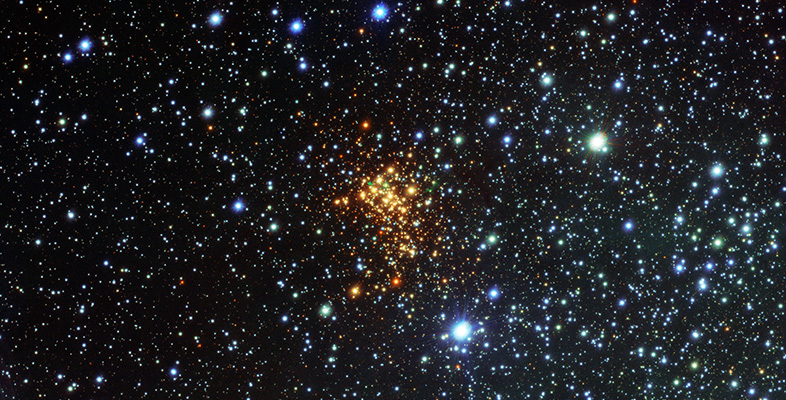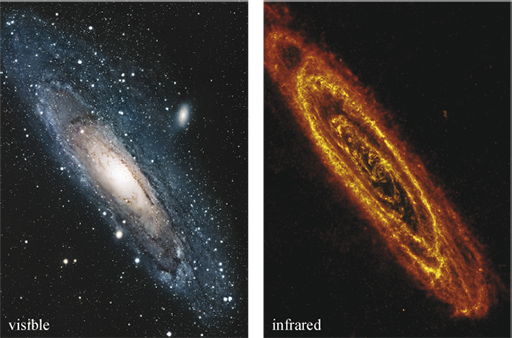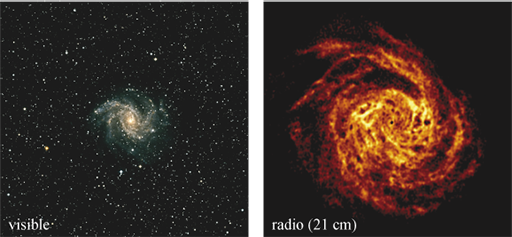3.2 Multiwavelength images
Modern astronomers can carry out observations using light with wavelengths spanning a range from a few metres to 10−20 m. This means we can now work with broadband images made across this full range of wavelengths.
Figure 10 shows images of a supernova remnant (the debris of an exploding star), the Crab nebula. These images were obtained by telescopes spanning the radio to the gamma ray regimes – a factor of more than 1018 in wavelength!
An important point that these multiwavelength images should help you to grasp is that the distribution of light on the sky (whatever wavelength we’re using to look) doesn’t always directly map the distribution of underlying matter that is producing the light. For example, in Figure 11 the left image shows an optical view of the nearby Andromeda galaxy, while the right image shows an infrared view of the same part of the sky.
-
What do you notice that is different about the appearance of the Andromeda galaxy in the optical and infrared images?
-
Regions that are dark in the optical image are lit up in the infrared image – the two wavelength regimes seem to be tracing different underlying matter.
Similarly, in Figure 12 the left image shows another galaxy, NGC 6964, in optical light, while the right image shows a radio map (with the same scale).
You might be wondering, for both Andromeda and NGC 6964: which of the two images in the set is better at telling us where the matter is located in the galaxy? How can we tell?
In the case of Andromeda, the optical light indicates where the stars are. However, some of the dark regions are dark not because there are no stars, but because dust obscures the stars and prevents their light from reaching us. In contrast, the infrared light is tracing the locations of warm dust, which glow because of its heat. The two images are thus tracing different forms of matter, and we will only be able to build a true picture of where all the matter is in Andromeda by combining together images at different wavelengths.
Similarly with NGC 6964, the optical and radio light look different: the galaxy appears much larger at radio wavelengths than in the optical. The reason for this is that the radio light does not come from the stars. It comes from atomic (neutral) hydrogen gas () via the 21 cm emission line. In this particular galaxy the gas is spread over a much larger region than most of the stars. Without the extra information from the radio image we would not have a true picture of where all of the matter is located.



